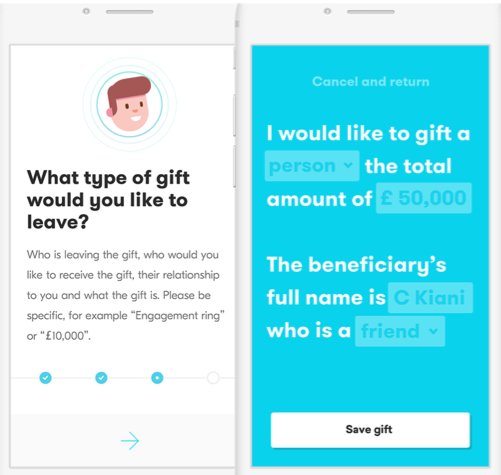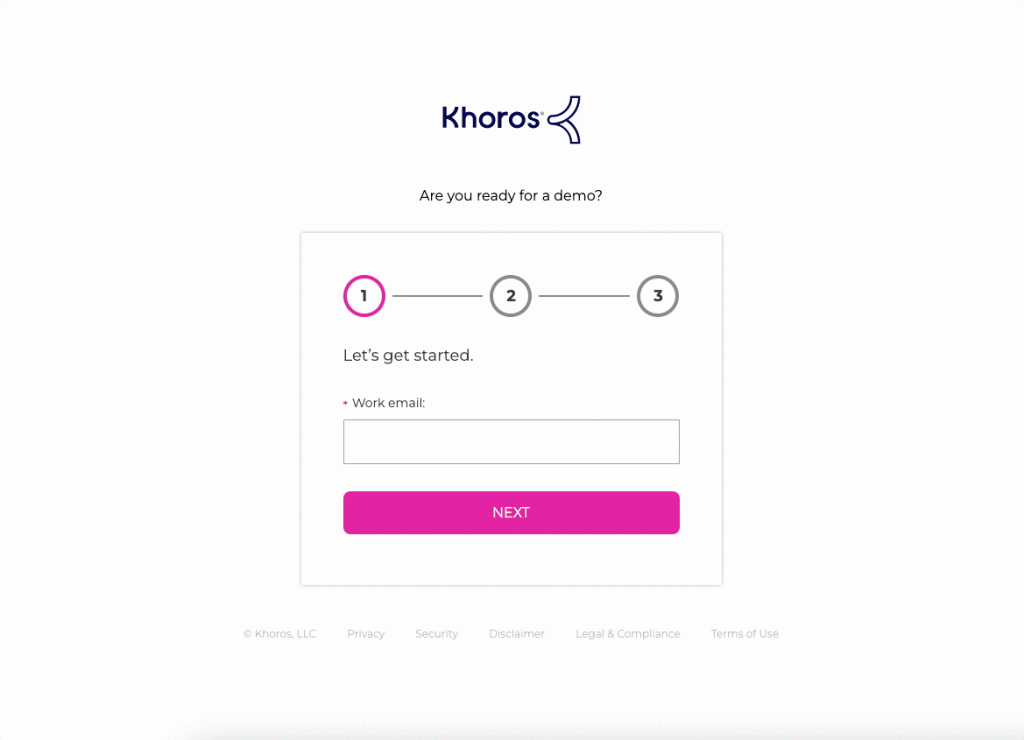Conversational Form
« Back to Glossary IndexQuick Summary
A conversational form is a fun, interactive way to collect information by mimicking a real-time chat instead of showing all the fields at once. This approach makes the process more engaging, reduces the chances of people abandoning the form, and boosts lead conversions. In this article, we’ll break down how conversational forms work, why they’re so effective, and how you can set them up easily. Plus, we’ll share how tools like Growform can help you create forms that are both engaging and high-converting.
Struggling with Low Form Completion Rates?
Traditional forms can be a bit overwhelming or feel impersonal, often leading users to abandon them halfway through. Let’s face it—nobody enjoys filling out long, complicated forms that ask for too much info right from the start.
Conversational forms, on the other hand, are a game-changer. They ask one question at a time, making the process feel simple, natural, and even a little fun!
In this Growform guide, we’ll walk you through how conversational forms work, when to use them, and share some easy tips to boost your conversions.
Why Listen to Us?
At Growform, we help businesses capture more leads with high-converting, interactive forms. Our multi-step conversational forms, conditional logic, and seamless integrations provide a frictionless experience while improving user engagement.

Clients using Growform have seen higher form completion rates, lower bounce rates, and increased lead quality by transitioning to conversational forms.
What Is a Conversational Form?
A conversational form transforms the process of filling out forms into a more personal and engaging experience by presenting questions one at a time, just like a chat.

Unlike traditional forms that overwhelm users with multiple fields all at once, conversational forms guide users step-by-step in a friendly and focused manner, reducing friction and making the process feel easier and more intuitive.
How Conversational Forms Work:
- Ask one question at a time: This keeps the experience simple and clear, helping users feel less overwhelmed and more likely to complete the form.
- Use natural, chat-like language: By adopting a tone that feels conversational and approachable, these forms create a more enjoyable and human-like interaction.
- Dynamically guide users with conditional logic: Based on the user’s answers, the form adapts in real-time, asking relevant follow-up questions and skipping unnecessary ones to save time and improve relevance.
- Seamlessly integrate with CRMs and automation tools: The data collected flows directly into your systems, keeping everything organized and ensuring a smooth workflow without manual input or delays.
These forms are ideal for a wide variety of use cases, such as lead generation for businesses, collecting feedback through customer surveys, streamlining job applications, and simplifying onboarding workflows for new customers or team members. With their tailored, engaging approach, conversational forms boost completion rates and leave a positive impression on users.
Conversational Forms vs. Traditional Forms
A conversational form provides a more engaging experience compared to a static form, leading to better user interaction.

Conversational Forms:
- Higher engagement – Users feel like they are in a natural conversation.
- Lower abandonment rates – One-question-at-a-time format reduces friction.
- Personalized experience – Adjusts dynamically based on user input.
Traditional Forms:
- Can feel overwhelming – Seeing all fields at once may deter users.
- Higher drop-off rates – Users may abandon if they feel the form is too long.
- Lack of interactivity – Doesn’t adapt to user responses.
Benefits of Conversational Forms
Higher Completion Rates
When a form feels more like a conversation than a chore, users are far less likely to abandon it. Conversational forms guide users through a step-by-step experience, making the process feel natural and engaging. By presenting one question at a time, they reduce cognitive overload and keep users focused, leading to higher completion rates.
Improved Lead Quality
Not every lead is a good fit, and conversational forms help you qualify leads in real-time. With conditional logic, your form can dynamically adjust based on responses, ensuring you collect only the most relevant information. If a user doesn’t meet your criteria, they can be filtered out automatically, saving your team time and improving efficiency.

Personalized & Engaging User Experience
A static form can feel impersonal, but a conversational form adapts to user responses, creating a tailored journey for each visitor. By incorporating interactive elements like buttons, emojis, and auto-fill, you make the experience more engaging and user-friendly.
This not only improves form interactions but also helps build a connection with your audience, making them more likely to complete the form and convert.
Best Practices for High-Converting Conversational Forms
1. Keep It Short & Focused
The key to a successful conversational form is keeping it simple and to the point. Asking only essential questions prevents user fatigue and keeps engagement high.
Also, using multi-step progress indicators reassures users by showing them how much is left to complete, reducing the chances of abandonment.

2. Use Conditional Logic for Personalization
A great conversational form feels customized to each user. With conditional logic, questions dynamically adjust based on responses, ensuring that users only see relevant fields. This avoids unnecessary questions and makes the experience smoother and more engaging, improving form completion rates.
3. Use Natural Language & Friendly Tone
Conversational forms should feel like a real conversation, not a robotic questionnaire. Writing in a casual, friendly tone makes the experience more inviting and interactive.
Instead of using formal commands like “Enter your email,” try a more natural approach: “What’s the best email to reach you at?” This small tweak enhances user engagement and makes the form feel more personal.
4. Optimize for Mobile Users
Most users will interact with your form on their phones, so responsive mobile optimization is crucial. A mobile-friendly design with large, touch-friendly buttons ensures a frustration-free experience.
Reducing the need for typing by using multiple-choice options or auto-suggest fields makes completing the form even easier on smaller screens.
5. Integrate with CRM & Automation Tools
To maximize efficiency, connect your conversational form with CRM and email marketing tools like HubSpot, Salesforce, or Mailchimp. This allows you to automatically store and manage leads, ensuring a seamless transition from form submission to follow-up.
Additionally, setting up automated reminders for users who don’t complete the form can help recover lost leads and improve conversion rates.
Boost Engagement with Conversational Forms Using Growform
Traditional forms can feel boring and static, right? Conversational forms, on the other hand, are way more interactive and engaging—they help boost conversions and improve lead quality.
With Growform’s multi-step conversational forms, conditional logic, and easy integrations, you can capture more leads while keeping form abandonment to a minimum.
Ready to create high-converting conversational forms? Get started with Growform today!
Recent Posts
- Your Guide to Using Webflow Form Builder Effectively
- Top 5 Lead Capture Form Examples That Can Boost Your Conversions (2025)
- What Is an Elementor Multi-Step Form & How Does Growform Improve It?
- We Review The Best Microsoft Forms Alternatives for Better Customization and Control
- Here’s Our Review of the Best Form Builders For WordPress Sites
